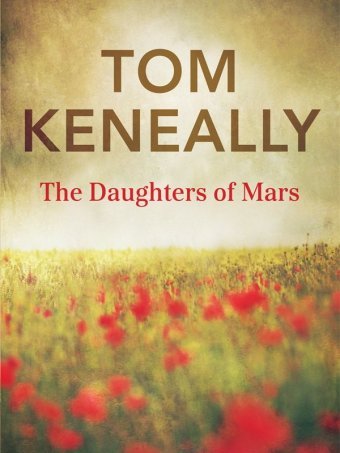
The Daughters of Mars
By Thomas Keneally
(Atria Books)
Thomas Keneally has always been a novelist who writes and lives in the big sweep of epic history.
He took on the end of the First World War in “Gossip From the Forest,” the U.S. Civil War in “Confederates,” and the Eritrean War of Independence in “To Asmara.” He won the Booker Prize for “Schindler’s List,” his account of one good German saving lives during the Holocaust. In “The Chant of Jimmie Blacksmith,” he told a story of racism and violence set amid his native Australia’s founding as an independent nation in 1901.
At the same time, Keneally, as a leader of the Australian Republican Movement, has been working for decades to cut ties to the British Commonwealth and reestablish his country as a completely independent state. So it comes as little surprise to find Keneally taking up the themes of history and national identity again in “The Daughters of Mars,” his new novel about two nurses who join the Australian military in World War I.
“Since World War I is such a fountain of national myths, I decided to focus on the physical damage and the people who dealt with it,” Keneally said by telephone from Sydney.
The novel is based, in large measure, on real -life journals Keneally tracked down in Australian libraries: “A lot of the nurses, especially, were good keepers of diaries.”
“The Daughters of Mars” is an epic, sweeping book and in Britain (where it was published last fall) the 77-year-old Keneally received the kind of rave reviews that would launch the career of an author half his age.
The novel tells the story of sisters Sally and Naomi Durrance. As volunteer nurses, they are sent off to the Dardanelles, where Australian troops face the Turks at Gallipoli. We see not the battle but its aftermath on the bodies of the men who come under the sisters’ care.
“On a cot before them now lay a man whose wound once unbandaged showed a face that was half steak, and no eyes,” Keneally writes.
Next, the women witness the carnage on the Western Front, where thousands upon thousands of young men were swallowed up in battles that seemed to go on without end.
“They had no idea the war would end in 1918, and they thought everyone they knew would be obliterated,” Keneally says. “They had seen so much damage, they didn’t believe anyone could ultimately survive.”
Returning from the war, the nurses, stretcher-bearers and doctors ― and the soldiers themselves ― were expected to carry on without complaint. It was a half century before the term “post-traumatic stress” became part of the popular lexicon, as Keneally knows all too well.
“Even at the end of World War II, when I saw blokes come back, they were expected to just pick up their lives,” Keneally says, recalling his youth in Australia. “Including fellows who had been POWs with the Japanese for years.”
By now, Keneally has spent a half century writing about war and violence and its effect on ordinary people. Asked what he’d learned from his previous 28 novels and applied to this one, Keneally answered:
“When you start a novel you tend not to pay attention to your previous books,” he said. “To an extent, you hope your book will be both the child of your previous work, and a better child. You hope that this will be the child that will validate your parenthood.”
With little doubt, “The Daughter of Mars” does precisely that.
(MCT)




![[Herald Interview] 'Trump will use tariffs as first line of defense for American manufacturing'](http://res.heraldm.com/phpwas/restmb_idxmake.php?idx=644&simg=/content/image/2024/11/26/20241126050017_0.jpg)


![[Herald Review] 'Gangnam B-Side' combines social realism with masterful suspense, performance](http://res.heraldm.com/phpwas/restmb_idxmake.php?idx=644&simg=/content/image/2024/11/25/20241125050072_0.jpg)
![[Health and care] Getting cancer young: Why cancer isn’t just an older person’s battle](http://res.heraldm.com/phpwas/restmb_idxmake.php?idx=644&simg=/content/image/2024/11/26/20241126050043_0.jpg)